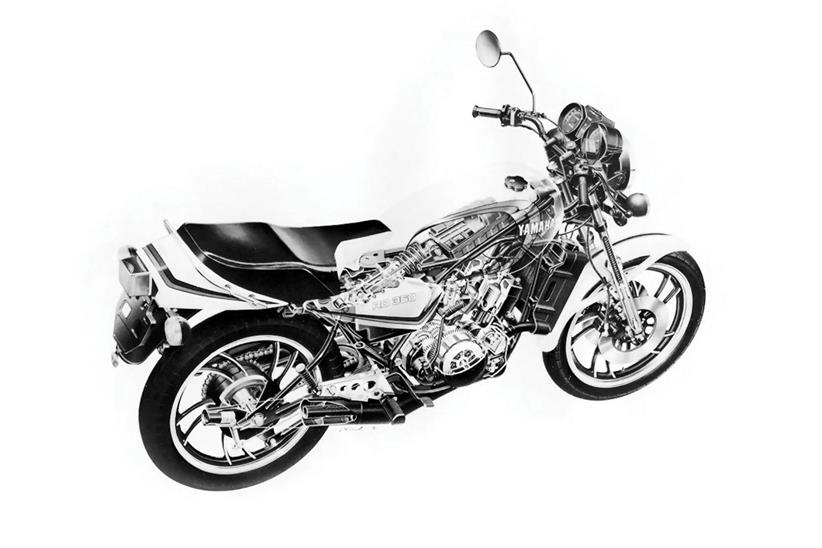The LC Files: underneath the skin
Yamaha’s pure race TZ may have been the inspiration for the RD350LC, but its technology was rooted more in the preceding, road-going RD series. Here’s a rundown of its key technical areas – and where they came from
MONOSHOCK
By 1980 Yamaha had been using cantilever single shock Monocross suspension on its dirt bikes and racers for most of the decade – although the first so-equipped production road bike, the DT175MX trailie, didn’t arrive until 1978. But fitting it to a sportster wasn’t so simple. Although shorter and more simple than the TZ shock (and preload adjustable only), space on the LC was still limited, requiring, effectively, a ‘pannier-style’ fuel tank, which explains its bulbous shape.
ITALIC WHEELS
The ‘swirl’ alloy wheel design, although subsequently adopted by other Yamaha models, remains one of the LC’s most distinctive features – but their creation, by the European-led design team, was whimsical.
Said team leader Paul Butler: “They were a direct lift from a Japanese car magazine which featured a car with these Catherine-wheel style wheels. It was difficult to persuade the Japanese to go with them, but we got them clayed up and everyone liked them.”
Interestingly, an early hastily cobbled together prototype used in ads was fitted with RD400 wheels.
LIQUID-COOLING
The LC’s water-jacket defines the bike more than any other technical feature – LC stands for liquid-cooling, after all. From the start of development, Yamaha bosses deemed it key, understanding that the preceding air-cooled RD250/400 had begun to lag behind the TZ racers its RD, ‘Race Developed’ tag was intended to emulate – the TZ350 had been water-cooled since 1976.
What Yamaha’s engineers came up with, though, was very different to the TZ, even if outwardly, at first glance at least (thanks in part to the TZ-style black engine finish), the LC’s powerplant looked very similar.
Instead, think of the RD LC as being just that – a liquid-cooled RD. So, where the TZ had its two cylinders cast in one block, the LC, like previous RDs, had separate barrels (although admittedly the TZ block would bolt straight onto the LC’s cases). The LC’s cylinder technology mimicked not the TZ350, but the old RD350. Its bores had cast-iron liners, like previous RDs, where the TZ had chromed aluminium.
Porting, too, was more RD than TZ. Where TZs used disc valve induction, RDs, LC included, were reed valve for increased durability and piston life.
But at the bottom end at least the LC had some TZ similarities. Although horizontally rather than vertically split (like the TZ) the LC shared TZ practice of having the crank pins integral with the outer flywheels while, externally, the crankcases were rubber-mounted to the frame front and rear, another typical TZ practice.
…AND THE COLOUR?
The white body paint contrasting with the black engine and exhausts defines the original LC as much as anything and was symptomatic of an era transitioning from glitzy, chrome-laden ‘glam rock’ to hard and plain punk. The black mechanicals were used partly to dissipate heat, partly to mimic the TZ. And the white? Butler again: “We tried some colour research and toyed with yellow for a while and even made some Kenny Roberts replicas. But the white just worked best – it was a good contrast with the black and drew attention to the engine and pipes.”
Words Phil West




